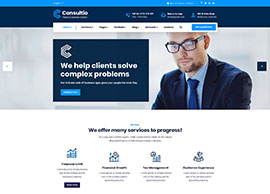May/June Mailing Systems Technology – We Made The Cover!!
There is an elite club in mail services. It is the top mail managers who we see at every industry event, who are connected with their peers both locally and nationally. They run the best operations and get the best rates. My goal is to share strategies of how these managers set up and run best in class mail operations for maximum efficiency and savings.
Automate Incoming Package Delivery
If you are receiving over 25 items per day from UPS®/FedEx® or accountable items from the USPS®, I would strongly recommend having an electronic tracking system to automate the manual task of logging packages. The basic components are a software program loaded onto a PC, a connected scanner and one or more portable scanning devices. This will allow you to scan in packages as they are received and match to the recipient. When the items are delivered, the recipient signs the portable handheld device to confirm proof of delivery. Overall, this type of system reduces time from mailroom to recipient, reduce time spent looking for lost packages, provide on-demand reporting and increase efficiency in the mailroom. It also creates a faster and paperless process.
Even if you already have an incoming tracking system, these are some of the newest trends you may want to consider to streamline package tracking:
- Cloud-Based vs. Loaded onto a PC – This is a great option if you have multiple locations, because you can receive at different sites and link to the same internal databases. It also helps the end users, who can check on their package status online.
- Email Package Notification – Even if most packages are delivered, another option might be to have recipient’s pick-up their package at a designated place. Most systems can be configured to automatically email package notifications.
- Link Digital Pictures of Damaged Items – You do not want to be responsible for items that come in damaged. Many tracking systems can allow you to upload digital pictures of damaged or suspicious packages. These pictures can be emailed to the final recipient to let them know their package came in damaged or to see if they were expecting an item that looks questionable.
- Scan USPS® Accountable Items – This sounds obvious, but many entities are using their system for UPS® and FedEx® only. More USPS® items now have tracking barcodes as the USPS® is the fastest growing player in the package space.
Take Control of Undeliverable as Addressed Mail
Undeliverable mail because of poor addresses costs businesses billions of dollars in lost opportunity. The best in class mail operations are handling this in three ways:
- Updating mailing lists to make sure you have the correct address and any move update information. If you are barcoding your mailings in-house, you need a software program that does this for you automatically. Make sure you have a National Change of Address (NCOA) service that is connected to your provider. If you are using a third party mail service, get any address changes back so you can update your databases for the future.
- Migrating to the full service Intelligent Mail® barcode because of the features it offers. Not only do they get an extra discount on their mailings, but they get no cost electronic address correction notifications and the ability to track mail delivery.
- Creating a documented process on how returned mail pieces get handled and that the information is getting updated back into the main systems. (You would be surprised how many companies don’t do anything with their returned mail pieces.)
Make the Best Insource/Outsource Decisions
This is not as easy as you would think because there are so many variables to consider. We are going to look at two types of outsourcing: Mail Fulfillment companies and Presort Service Provider.
Mail Fulfillment Companies: These service providers, sometimes called Mail Houses, will perform mailing services such as printing, folding, inserting, addressing, presorting and transporting to the USPS®. It has gotten more confusing because many printers are offering mailing services as well. It is important to know the detail of what you are paying to make sure you are getting the best rate, to compare against other providers, or to determine if the work should be brought in house. Look out for fees that are outside the per piece charges. Most providers will charge set-up and delivery fees that are fixed regardless of the mailing size. This is fine when you are sending out 50,000 pieces, but a $200 set-up fee for 1,000 postcards means you are paying $.20 per piece plus the processing charges.
To determine what should be done in-house, look at the make-up of your mailings. If most of the projects are less than 5,000 pieces and you have the proper staff, space, transportation (to get mailings to the USPS®) and some simple equipment (printers, folder inserter, and postal software), this could be your least expensive option. Make sure you do enough mailings to make the investment and time worthwhile. Regardless of which way you go, it is a best practice to review your mailing data at least once per year to make sure you are doing your projects in the cost-effective way possible to meet your desired objectives.
Presort Service Providers – These services pick up mail at your office, run it through their sorters (that break it down as close as possible to their final destination) and schedule it directly into the postal system. They are great to use because they can get you discounts with minimal effort and potentially move mail faster through the Postal Service.
This is an easy one from an in-house/outsource perspective because it is a simple financial transaction. If the presort provider can move your mail at lower costs than you can do it yourself and the delivery impact does not negate the savings, use them. Here are the best applications for this type of service:
- You have mixed department mail that would not qualify for any discount on its own. These services can typically give you at least 5-15% discounts on your mail. Typical minimum volumes are 500 pieces per day or single pickups of 1,000 pieces.
- You are automating your mail today but the presort service can get you better rates due to their density of mail by co-mingling with their other customers.
- You are automating Standard Rate mailings and the presort service can get your mail drop shipped to the delivery address USPS® Sectional Center facility splitting the destination entry discounts offered by the USPS®.
Manage Detailed Reporting
The best mail operations will have very detailed reporting on their operations. This is the only way to have consistent visibility to how they are performing. Here are some key areas that need detailed documentation:
Postage/Shipping Spend – This can be very difficult to get because of the amount of places it needs to be collected. The better this is managed, the more power it creates inside your organization. I recommend having the 12 month detail of the spend categories below accessible and reviewed frequently:
- USPS® Permit Spends – There could be multiple permits and all need to be tracked. I have seen many companies lose visibility to accounts with funds that sit idle and in some cases never recovered.
- USPS® Metered Spend – This can be pulled from the system or from the vendor websites.
- USPS® Cash and Credit Card spend – There could be people in your organization working out of their homes or travelling that need to mail items and pay with petty cash or credit cards. It is a good idea to monitor this expense to make sure it does not get misused. There are also low -cost PC Postage options for managing this spend.
- UPS® and FedEx® Spend – This spend should be looked at alongside postage because there could be savings opportunities moving specific items between the carriers. Also, there are many carrier fees and delivery guarantees that should be validated to make sure you are charged the proper rate and receiving any potential refunds.
Mail Service Provider Fees – The best companies look at their invoices regularly and know exactly what they are paying and how to validate charges. These service providers can charge fees in many different areas that can make the costs much higher than originally expected.
Staff Productivity – I left the most significant for last since the best operations will have detailed performance metrics for their people. This will show very important detail on how their operation is being managed. Here are some examples:
- Mail Produced, Metered, Sorted by Employee
- Internal Pickup and Delivery by Employee
- Sick days and overtime required
- Customer service complaints by employee
Staying Connected
It is crucial for mail managers to stay connected inside the industry because of all of the dramatic changes going on with the USPS® that will affect all of us. The Post Office has closed over half of their Sectional Center Facilities, many retail locations, mail has been slowed by up to a day, and may require different barcodes. I am on the board of my local Postal Customer Council (PCC) and I am amazed how few companies show up to events that go over these changes.
Here are the best ways to stay involved and informed about these changes and best practices in the mailing industry:
- Join your local PCC and MSMA Chapter – They are the best source for how these changes will impact your mail locally.
- Get Certified – There are some industry certifications that make sense in understanding all of these changes. The MSMA offers a Mail Design Consultant (MDC) and a more involved Certified Mail and Distribution Systems Manager (CMDSM) that may be worth looking into.
- Join Mail Groups on LinkedIn – Members can ask questions, give advice, as well post the most up to date media stories around mail. Some groups that I belong to and like are “Mailing Systems Technology” (It is really good – I am not just listing it because you are reading this periodical), “Mail Geeks”, “National Postal Forum” and “Document Handling and Mail Process Professionals”.
- Attend National Postal Form (NPF) and MAILCOM – To learn from your peers and see what is available in the industry.
We are going through the most rapid postal changes any of us have experienced. This will require the best oversight and management to optimize operations. The key piece to managing best in class operations is not to try to do everything but to know what is available and choose what makes the most sense in your own operation.












































